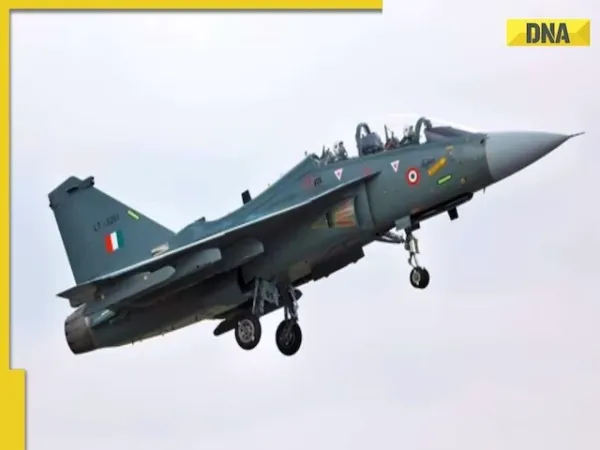HAL’s Tejas Moment: Triumph or death rattle of India’s defence manufacturing?
admin | October 9, 2025 4:22 PM CST

On October 17, Defence Minister Rajnath Singh will preside over a ceremony in Nashik marking the handover of India's first Light Combat Aircraft (LCA) Tejas Mk1A to the Indian Air Force.
It's a moment meant for celebration-a testament to indigenous capability and self-reliance in defense manufacturing. Yet beneath the fanfare lies a troubling reality that threatens to undermine not just this program, but India's entire defense industrial ambitions.
The delivery comes over eight months late. HAL's contract to supply 83 Tejas Mk1A aircraft was scheduled to begin in February 2024, but delays in engine deliveries from General Electric have pushed the timeline back significantly. With GE supplying merely one or two engines per month, HAL now projects completion within four years-assuming no further setbacks.
The Double Standard That's Killing Indigenous Defense
Here's where the story takes a disturbing turn. While GE Aerospace faces minimal consequences for its glacial pace of deliveries, HAL operates in an ecosystem of punitive red tape and selective accountability that would be laughable if the stakes weren't so high.
Consider the glaring contradiction: GE, a foreign supplier, delays critical engine deliveries month after month, yet continues to enjoy protective treatment from India's defense establishment. Negotiations for an additional 97 Tejas Mk1A fighters proceed smoothly with the same supplier whose tardiness has already crippled the current contract. Meanwhile, domestic suppliers who dare to miss deadlines or face technical challenges are swiftly blacklisted, their reputations destroyed, and their access to future contracts severed.
This isn't just about engines. It's about a systematic bias that pervades India's defense procurement system-one that views foreign suppliers through rose-tinted glasses while subjecting indigenous manufacturers to microscopic scrutiny and bureaucratic strangulation.
Red Tapism: HAL's Ball and Chain
The red tape that entangles HAL is legendary. Every decision requires multiple approvals. Every procurement faces layers of financial vetting. Every technical modification demands committee clearances that stretch for months. Innovation dies in this labyrinth of procedures, while competitors in the private sector-unencumbered by government oversight-move with agility and purpose.
HAL's differential treatment of suppliers within its own supply chain further complicates matters. Genuine vendors who are willing to share technology and build long-term partnerships often find themselves kept at arm's length due to one bureaucratic hurdle or another. Technical collaborators ready to transfer critical know-how are turned away because their paperwork doesn't satisfy some arcane requirement, while established players-even those with poor track records-continue to receive preferential access.
This isn't procurement policy; it's self-sabotage.
The IAF's Desperate Reality
While HAL wrestles with red tape, the Indian Air Force operates with 29 squadrons-13 short of its sanctioned strength of 42. Two MiG-21 squadrons were recently decommissioned, further widening the capability gap. Air Chief Marshal Amar Preet Singh's words are haunting: "Hungry mouths are ready; we are waiting for the food."
The IAF needs 30-40 aircraft delivered annually just to maintain optimal strength. At current production rates, that's a pipe dream. Defense analysts estimate that bridging the capability gap will take at least five years-and that's an optimistic scenario assuming no further delays.
Meanwhile, the proposal to acquire 114 Multi-Role Fighter Aircraft continues its slow crawl through procedural stages. The plan to procure 'Made in India' Rafale jets offers some hope, with 18 expected off-the-shelf, but Dassault Aviation's production rate of four aircraft per month means even this will take years to materialize.
The HMT Warning: A Cautionary Tale HAL Cannot Ignore
Here's the uncomfortable truth that HAL's leadership must confront: continue down this path, and HAL will become the defense sector's equivalent of HMT or ITI-once-proud public sector undertakings reduced to skeletal operations, their glory days a distant memory, their market share devoured by nimbler competitors.
The signs are already visible. Private players are circling, eager to capitalize on HAL's inefficiencies. They operate without the suffocating bureaucracy that paralyzes HAL. They can make decisions in weeks that take HAL months. They can partner with international vendors without navigating a maze of government approvals.
If HAL doesn't shed its red tape culture, if it doesn't learn to treat all suppliers fairly, if it doesn't develop the institutional courage to push back against discriminatory procurement practices, it will lose everything. The Advanced Medium Combat Aircraft (AMCA) program-India's ambitious fifth-generation stealth fighter-could easily slip into private hands. The 200-250 additional fighters India requires over the coming decades? Private manufacturers will build them.
A Call for Radical Reform
What's needed isn't incremental change but radical transformation:
First, India's defense establishment must end its double standards. Foreign suppliers who fail to meet deadlines must face the same consequences as domestic ones. If a vendor is blacklisted for delays, that standard should apply universally-regardless of nationality.
Second, HAL needs autonomy to operate like a competitive defense manufacturer, not a government department. Decision-making authority must be decentralized. Procurement processes must be streamlined. Innovation must be rewarded, not strangled by committee approvals.
Third, supplier relationships must be based on merit and capability, not bureaucratic convenience. Vendors willing to share technology and build genuine partnerships should be welcomed, not kept away by arcane procedural requirements.
Fourth, accountability must flow both ways. If HAL is penalized for delays caused by supplier failures, those suppliers must share responsibility. GE's engine delivery failures should have consequences, not diplomatic immunity.
The Moment of Truth
The Tejas Mk1A delivery on October 17 should be more than a photo opportunity. It should be a wake-up call. India stands at a crossroads in its defense manufacturing journey. The ₹15,000 crore sanctioned for AMCA development, the negotiations for additional Tejas aircraft, the MRFA procurement-all of it hangs in the balance.
HAL can either continue operating within a system designed for failure, accepting differential treatment, drowning in red tape, and watching its market share evaporate-or it can demand the reforms necessary for survival.
The choice is stark: Transform or perish. Become a competitive, world-class defense manufacturer or fade into irrelevance like HMT and ITI before it.
Air Chief Marshal Singh's hungry squadrons are waiting. The question is whether India's defense establishment has the vision and courage to feed them-or whether bureaucratic inertia will leave them starving while private players and foreign suppliers feast on the opportunities HAL was too hidebound to seize.
The Tejas may be ready to fly. But is HAL ready to soar?
(The author of this article is a Defence, Aerospace & Political Analyst based in Bengaluru. He is also Director of ADD Engineering Components, India, Pvt. Ltd, a subsidiary of ADD Engineering GmbH, Germany. You can reach him at: girishlinganna@gmail.com)
READ NEXT
-
IND W vs SA W, ICC Women’s World Cup 2025 Weather Update: Rain Delays Start In Vizag, What Happens If The Match Gets Abandoned?

-
Actress Sara Khan Faces Online Hate From Muslim Fanatics For Marrying 'Hindu' Krish Pathak: 'Islam Forbids This, Jahannum Mein Gayi'

-
Royal Enfield on Amazon: Bullet, Classic 350, Hunter and others go on sale online before Diwali 2025, here’s how to buy them

-
DA hike BIG update: Modi govt’s Diwali bonanza for central employees, 8% DA hike to come into effect from…, its applicable for…

-
Meet Indian queen who lives in Rs 24000 crore palace with gold-plated walls and 170 rooms, bigger than Mukesh Ambani, Nita Ambani’s Antilia, she is…
